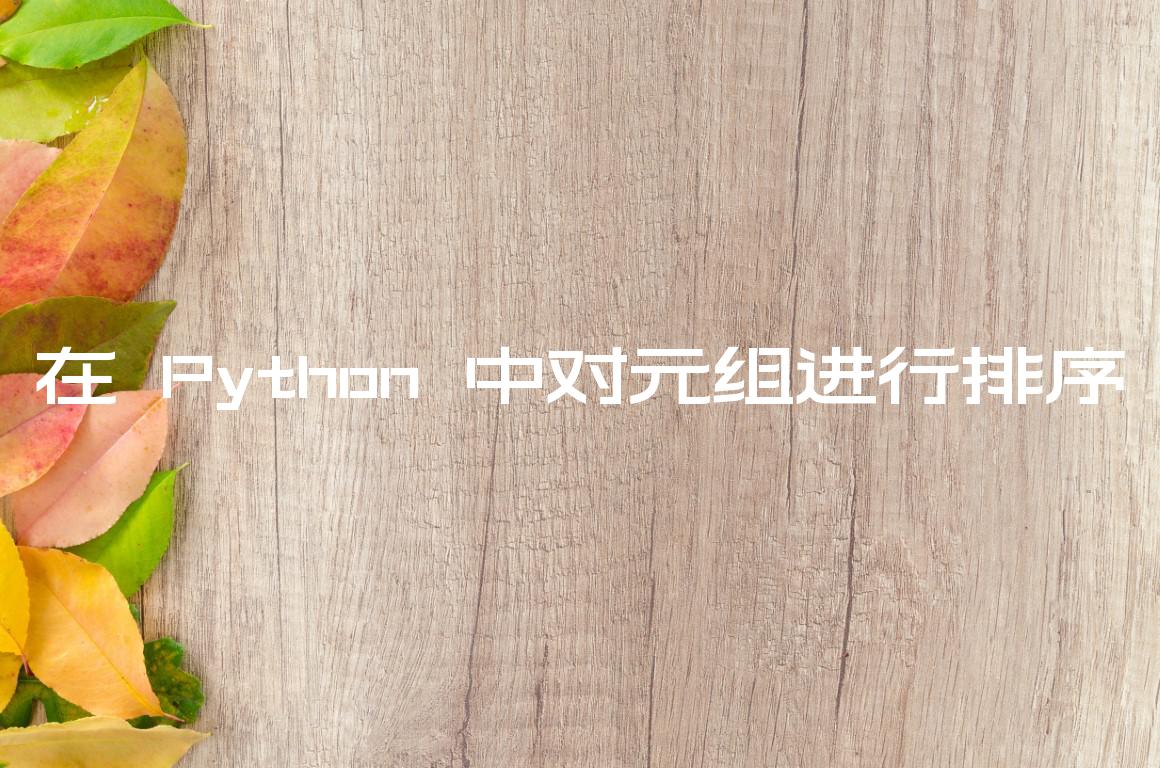在 Python 中对元组进行排序
Sort a Tuple in Python
在 Python 中对元组进行排序:
- 将元组传递给
sorted()函数。 - 该函数将从元组中的项目返回一个新的排序列表。
- 将排序后的列表传递给
tuple()类以将其转换为元组。
main.py
# ✅ sort a tuple containing numbers my_tuple_1 = (3, 1, 2, 8, 10) sorted_tuple_1 = tuple(sorted(my_tuple_1)) print(sorted_tuple_1) # 👉️ [1, 2, 3, 8, 10] # ------------------ # ✅ sort a tuple containing strings my_tuple_2 = ('d', 'b', 'c', 'a') sorted_tuple_2 = tuple(sorted(my_tuple_2)) print(sorted_tuple_2) # 👉️ ['a', 'b', 'c', 'd'] # ------------------ # ✅ sort a list of tuples by second element in each tuple my_list_of_tuples = [('a', 100), ('b', 50), ('c', 75)] result = sorted(my_list_of_tuples, key=lambda t: t[1]) print(result) # 👉️ [('b', 50), ('c', 75), ('a', 100)]
元组与列表非常相似,但实现的内置方法较少并且是不可变的(无法更改)。
由于无法更改元组,因此对元组进行排序的唯一方法是创建一个具有所需项目顺序的新元组。
sorted函数接受一个可迭代对象,并从可迭代对象中的项目返回一个新的排序列表。
main.py
my_tuple_1 = (3, 1, 2, 8, 10) sorted_list = sorted(my_tuple_1) print(sorted_list) # 👉️ [1, 2, 3, 8, 10]
您可以将列表传递给tuple()类以将其转换回元组。
该sorted()函数采用可选key参数,可用于按不同标准进行排序。
main.py
my_tuple_2 = ('abc', 'abcd', 'a', 'ab',) sorted_tuple_2 = tuple( sorted(my_tuple_2, key=lambda s: len(s)) ) print(sorted_tuple_2) # 👉️ ('a', 'ab', 'abc', 'abcd')
key参数可以设置为确定排序标准的函数。
该示例按长度(升序)对元组中的项目进行排序。
该sorted()方法还带有一个可选reverse参数。
main.py
my_tuple_1 = (3, 1, 2, 8, 10) sorted_tuple_1 = tuple(sorted(my_tuple_1, reverse=True)) print(sorted_tuple_1) # 👉️ (10, 8, 3, 2, 1) # ------------------ my_tuple_2 = ('abc', 'abcd', 'a', 'ab',) sorted_tuple_2 = tuple( sorted(my_tuple_2, key=lambda s: len(s), reverse=True) ) print(sorted_tuple_2) # 👉️ ('abcd', 'abc', 'ab', 'a')
如果
reverse参数设置为True,则元素将按照每次比较都反转的方式进行排序。您还可以使用key参数对元组列表进行排序。
main.py
# ✅ sort a list of tuples by second element in each tuple my_list_of_tuples = [('a', 100), ('b', 50), ('c', 75)] result = sorted(my_list_of_tuples, key=lambda t: t[1]) print(result) # 👉️ [('b', 50), ('c', 75), ('a', 100)]
我们只是在每个元组中选择了我们想要排序的项目。
该示例按第二项对元组列表进行排序。
